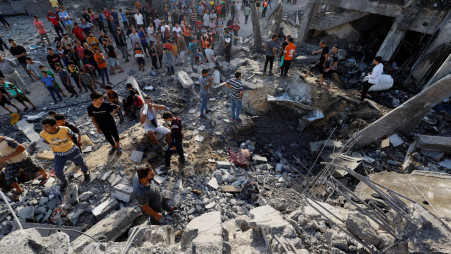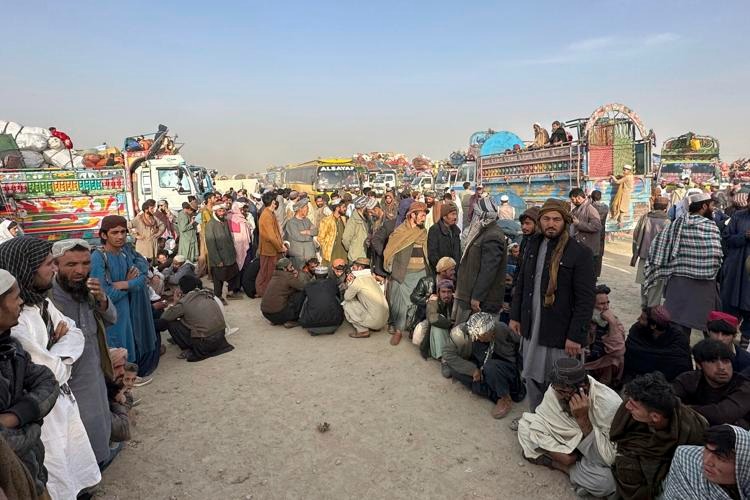The Gaza Strip is enduring an unprecedented humanitarian crisis as it enters its second month without access to essential services such as water, food, and healthcare. The United Nations has raised alarm bells, warning that Gaza’s health, sanitation, water, and food services are on the verge of breaking down. The ongoing Israeli bombardment of this densely populated region, which began on October 7, has left more than 10,000 Palestinians dead, including over 4,000 children, while Israel has also faced significant casualties, with more than 1,400 people losing their lives. In the midst of this chaos, the Ministry of Health in Gaza reports an alarming increase in the number of wounded individuals, which has now surpassed 25,000. This report delves into the dire situation Gaza finds itself in, examining the severe water shortage, food scarcity, and the challenges faced by healthcare facilities.
Severe Water Shortage Puts Lives at Risk
The Gaza Strip has been grappling with a deteriorating water situation for years, with 97 percent of its water declared unfit for consumption by the Global Institute for Water, Environment, and Health and the Euro-Mediterranean Human Rights Monitor in 2021. Now, the situation has worsened due to a lack of electricity, rendering desalination and wastewater treatment plants inoperative and further jeopardizing access to safe drinking water.
Israel’s destructive actions on November 4, which saw the destruction of a water reservoir and a public water tank, have only exacerbated the crisis. Many residents are left with no choice but to drink polluted, salty water and endure long queues in the hope of securing potable water. The World Health Organization (WHO) emphasizes that an average daily allocation of a mere three liters per person for all daily needs, including drinking and hygiene, falls far short of the 50 to 100 liters per person per day recommended. Dehydration, a consequence of insufficient water, can have devastating effects, from impacting the kidneys to affecting the heart. Children, in particular, are vulnerable to rapid dehydration, which can be lethal, making the situation in Gaza increasingly dire.
Food Scarcity Grips Gaza Strip, Starvation Looms
Even before the conflict began on October 7, 80 percent of Gaza’s population was already food insecure. Nearly half of the 2.3 million inhabitants relied on food assistance from the UN Relief and Works Agency for Palestine Refugees (UNRWA). The restrictions imposed on the entry of goods into Gaza have further exacerbated the food crisis.
Since October 21, a mere 451 trucks have entered Gaza, carrying a limited amount of food supplies. The World Food Programme (WFP) warns that food stocks in Gaza are rapidly depleting, with just five days of supplies remaining. As a result, the few bakeries still operational are forced to operate at six times their normal capacity, leading to residents waiting in long lines for basic necessities and making them vulnerable to Israeli attacks.
Healthcare Facilities Overwhelmed, Aiding Gaza’s Suffering Population Becomes a Challenge
The Gaza Strip’s healthcare system has been stretched to its limits. Women and children bear the brunt of the healthcare crisis, with women giving birth wherever they can due to the inability to access proper facilities. Maternal and neonatal deaths are increasing, and overcrowded UNRWA shelters are reporting cases of acute respiratory infections, diarrhea, and chickenpox. Overburdened and exceeding capacity, these shelters have forced people to live on the streets, further intensifying the health crisis.
Lack of supplies, including disinfectants, has pushed doctors to extreme measures, using vinegar for sterilization and resorting to makeshift tools for surgeries. Critical facilities, including the only cancer hospital in Gaza, have had to close due to the lack of fuel, severely impacting patients in need of intensive care and dialysis. To make matters worse, main power generators at major hospitals have ceased operation, and Israeli airstrikes continue to target healthcare facilities, posing a grave threat to patients, health workers, and those seeking refuge in the vicinity.
In conclusion, the Gaza Strip is teetering on the brink of a catastrophic humanitarian disaster. With water, food, and healthcare services deteriorating rapidly, urgent international intervention is needed to prevent a complete collapse of essential services and save countless lives in this beleaguered region.
















